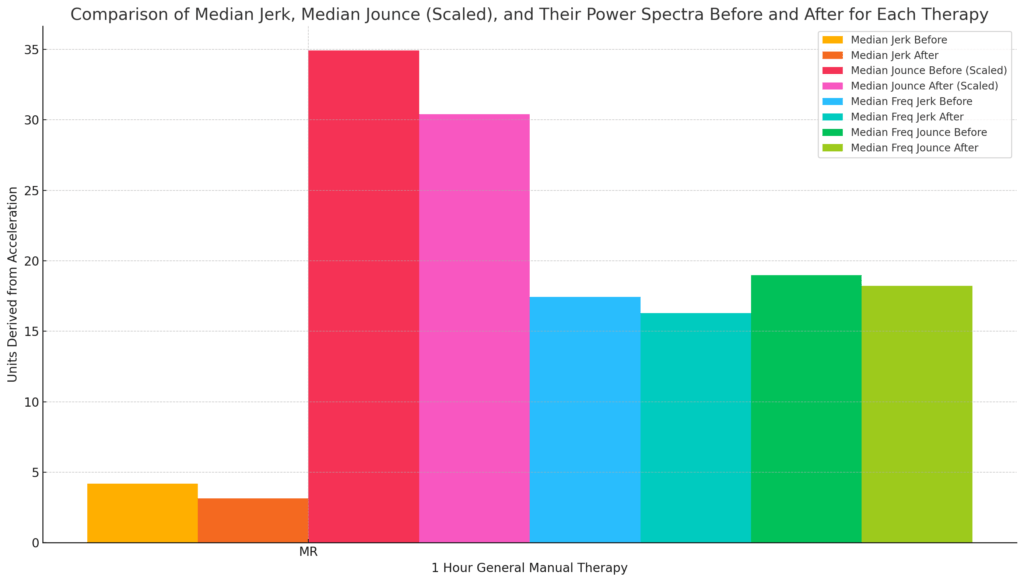This post discusses the preliminary results of a study I am undertaking to discover if the efficacy of Manual Therapy treatments can be evaluated by the qualia of how the client moves before and after a session. The post discussing this study is here:
Here are the preliminary results plotted before and after for comparison:


NB: This is still a small dataset(<10 samples); the standard deviation is anticipated to smooth out as the available data increases. However, the trends appear to indicate that using accelerometers as a metric for therapeutic efficacy has utility.
The Data:
- Median Jerk Before and After Treatment:
- The Median Jerk (g/s³) values were plotted to compare how each modality affected participants before and after treatment.
- It appears that some modalities, like Myofascial Release (MR), showed a reduction in jerk after treatment, suggesting an improvement in the smoothness of movement. For other data points, the change varied depending on the date and individual treatment sessions.
- The trend lines for “before” and “after” often showed divergence, indicating the effects of the treatment. Reducing Median Jerk could imply more controlled, smoother movements post-treatment, particularly for some modalities.
- Median Frequency of Jerk Before and After Treatment:
- The second chart compared the Median Frequency of Jerk (Hz) before and after treatment for each modality.
- Generally, the median frequency tended to decrease after treatment for most modalities, such as MR. This suggests that the body movements became less frequent and potentially more deliberate.
- Lower median frequency values can indicate better control and stability during movement, which aligns with the intended outcomes of therapeutic interventions.
Key Observations:
- Treatment Effects: The “after” lines often exhibited decreases for both jerk magnitude and frequency, which indicates improvement in movement control and reduced tremors or irregularities.
- Variability by Modality: Different modalities seem to affect the outcomes to varying extents, with Myofascial Release showing some consistent trends in improvement. However, there were also instances where jerk or frequency did not improve or showed mixed results, which might need further analysis.
Conclusion:
The data suggests that certain modalities effectively reduce the jerkiness and frequency of gait movements, which could imply smoother and more controlled body movements. The efficacy varied between treatments and individual sessions, suggesting a personalized effect of these therapeutic modalities. Further investigation into individual differences and consistency of improvements might help understand these trends better.
